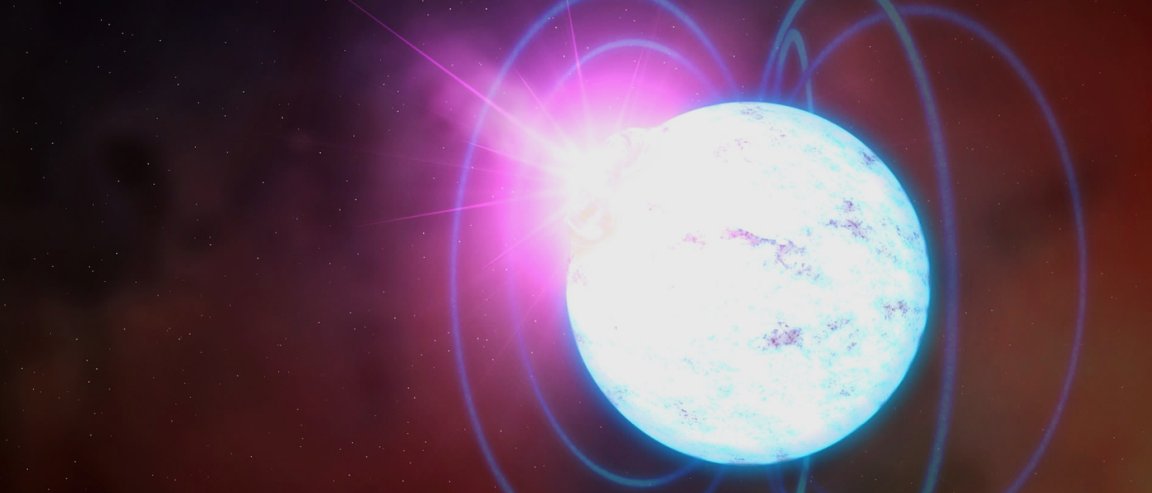
First Magnetar with a Wind Nebula Ever Found
Using NASA’s Swift satellite, astronomers found a wind nebula surrounding a magnetar for the first time. Why is this remarkable?
First of all, a magnetar alone is a very rare thing…and quite a scary one too. Magnetars, as their name suggests, are highly magnetic neutron stars. How magnetic? They are 1,000 trillion times more magnetic than our common environment–meaning to 1 quadrillion gauss.
And what does that mean for a human being? According to an article by astrophysicist Paul Sutter: “Get too close to one (say, within 1,000 kilometers, or about 600 miles), and the magnetic fields are strong enough to upset not just your bioelectricity — rendering your nerve impulses hilariously useless — but your very molecular structure. In a magnetar’s field, you just kind of … dissolve.”
Up to now, only 29 of the 2,600 neutron stars ever found have been classified as magnetars. And this is the first time a magnetar has ever been found enveloped in a wind nebula, a massive cloud of high-energy particles.
The magnetar involved was one discovered in 2011 and named Swift J1834.9-0846, J1834.9 for short. Astronomers are now trying to understand how the magnetar managed to sustain a wind nebula.

The Mystery
It was previously believed that only young pulsars are capable of harboring wind nebulae due to the fact that they spin fast enough, keeping the wind nebula from escaping out into space. And even these pulsars can lose the wind nebulae as they grow old and spin slower.

Magnetars are known to spin slower than regular pulsars, making it baffling how J1834.9 manages to keep its wind nebula.
“Right now, we don’t know how J1834.9 developed and continues to maintain a wind nebula, which until now was a structure only seen around young pulsars,” said lead researcher George Younes from George Washington University.
While a magnetar’s behavior is very chaotic and is not very well understood as of now, researchers plan to investigate this occurrence further.
“It represents a unique opportunity to study the magnetar’s historical activity, opening a whole new playground for theorists like me,” says Jonathan Granot from Israel’s Open University.
“If the process here is similar, then about 10 percent of the magnetar’s rotational energy loss is powering the nebula’s glow, which would be the highest efficiency ever measured in such a system,” Younes adds.